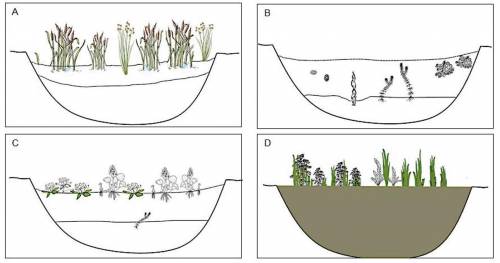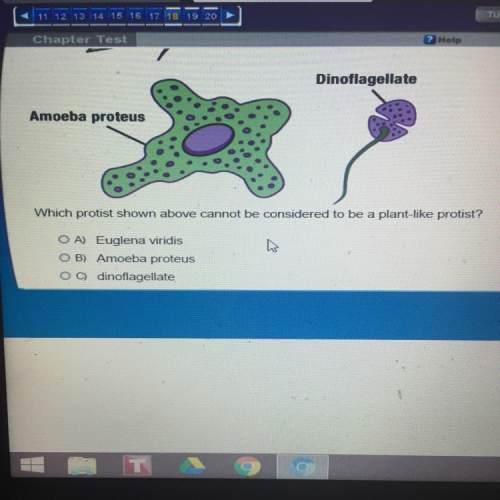HELP ME PLEASE...
Ecological Succession: Succession of a Pond
Ponds are created when wa...

HELP ME PLEASE...
Ecological Succession: Succession of a Pond
Ponds are created when water collects in natural dips in the earth. This creates a suitable environment for submerged plants such as algae and waterweed. As each submerged plant dies, it sinks to the bottom and decays. Over time, this adds a layer of humus at the bottom of the pond. Humus is organic matter that is formed from decayed plants or animals. Over a very long time, the depth of the pond will decrease. These conditions favor the floating plants such as lotus and water lilies. Floating plants then cover the pond’s surface and prevent sunlight from penetrating the pond. The absence of sunlight diminishes the population of the algae and waterweed, increasing the death rate among them and further increasing the layer of humus at the bottom of the pond.
Continuous disposition of dead organic matter from floating plants will make the pond become shallow. These conditions favor amphibian plants, such as cattail and sedges. Over time, amphibian plants replace the floating plants. Continuous disposition of dead organic matter from amphibian plants will cause the pond to become dry. The drier conditions are suitable for the growth of shrubs, herbs and ferns. As the shrubs, ferns and herbs grow they eventually replace the amphibian plants. Finally, trees will begin to grow and a primary forest will be produced.
For each scenario described, determine if it is pond A, B, C, or D.
1) _ As the pond dries up, the soil conditions are favorable for terrestrial plants such as ferns and grasses.
2) _ The pond becomes shallow, producing favorable conditions for larger, rooted plants.
3) _ Algae ceases to thrive due to the presence of surface floating plants. The algae are replaced.
4) _ Photosynthetic algae thrive in this pond.
5) Put the pictures (A, B, C and D) in order of succession:
6) Why is this an example of succession?
7) Is this an example of primary succession or secondary succession? Explain.
8) Predict what occurrences would follow the steps pictured.
9) Review the different stages of the ecological pond succession. Choose two stages that you think would attract animals to the community. Name the animals and describe why you think they would be attracted to the pond at that point in time.
10) Do you think it’s possible for succession to happen in a short amount of time? Explain.


Answers: 3


Another question on Biology

Biology, 22.06.2019 13:00
14) whenever diploid populations are in hardy-weinberg equilibrium at a particular locus a) the allele's frequency should not change from one generation to the next, but its representation in homozygous and heterozygous genotypes may change. b) natural selection, gene flow, and genetic drift are acting equally to change an allele's frequency. c) this means that, at this locus, two alleles are present in equal proportions. d) the population itself is not evolving, but individuals within the population may be evolving.
Answers: 2

Biology, 22.06.2019 19:00
Which of the following molecules could pass through the plasma membrane by simple diffusion? a. na+ ions b. glucose c. amino acids d. carbon dioxide
Answers: 1

Biology, 23.06.2019 02:30
State the difference between the cold-temperature sensor that has been recently discovered and the one that scientists already knew about.
Answers: 2

Biology, 23.06.2019 05:30
What explains why a single ripe fruit may ripen an entire crate of unripe fruit
Answers: 1
You know the right answer?
Questions

English, 26.06.2020 19:01



English, 26.06.2020 19:01



World Languages, 26.06.2020 19:01



French, 26.06.2020 19:01

Biology, 26.06.2020 19:01

Mathematics, 26.06.2020 19:01

Mathematics, 26.06.2020 19:01


French, 26.06.2020 19:01



Mathematics, 26.06.2020 19:01


Chemistry, 26.06.2020 19:01




